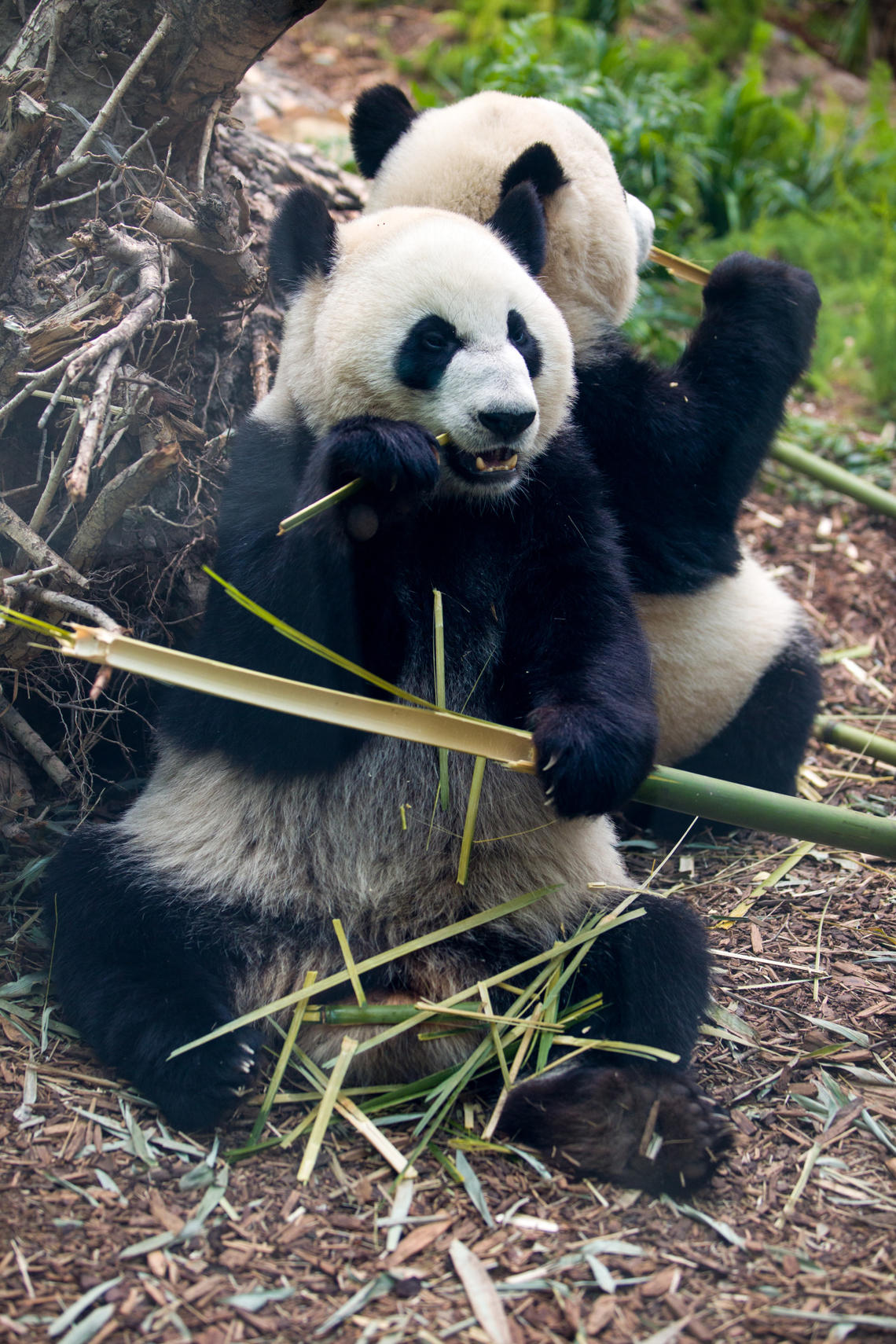May 3, 2018
New Calgary Zoo residents have won the hearts of Vet Med, zoo staff

Sandie Black first saw giant pandas at the Calgary Zoo in 1988 when she applied for a job with the veterinary staff. Fast-forward 30 years, Black is now tasked with caring for a family of the iconic black and white bears who will call the Calgary Zoo home for the next five years.
“They were here when I first applied for the job but were gone by the time I started,” says Black, now the head of veterinary services at the zoo and a clinical associate professor of zoo and wildlife medicine with the University of Calgary’s Faculty of Veterinary Medicine (UCVM).
A family of giant pandas — adults Er Shun and Da Mao and cubs Ji Panpan and Jia Yueyue — have arrived from the Toronto Zoo and are set to officially greet the Calgary public on May 7. The pandas have been at the zoo for almost a month and a half getting acclimatized to their new surroundings, and by all accounts, the staff at the Calgary Zoo have fallen in love with the bamboo-munching mammals, including Black, who says their arrival was well worth the wait.
“They are incredible,” says Black. “We get different animals all the time and it’s always exciting, it’s also part of the job. But when I went to see the pandas I was not expecting to be quite as charmed as I was. There was something about them — they’re characters, their personalities are quite hilarious at times.
“Because adults, when they’re not eating, spend a lot of time sleeping, they’re not that active. I think it helps that they’re all quite young, especially having the two cubs who still play a lot is really great.”
Black and her team are in charge of overseeing the health care of all the animals at the Calgary Zoo, including the pandas. Her senior staff veterinarian is Doug Whiteside, also a UCVM clinical associate professor.

When they pandas are not eating, they're usually sleeping, says Sandie Black.
Riley Brandt, University of Calgary
Formal relationship with zoo means UCVM students get to help
Black and Whiteside helped develop the university’s application to establish the Faculty of Veterinary Medicine, which opened in 2005. Having a formal relationship with the zoo was key to the success of the school’s formation and means that fourth-year students get to complete four-week rotations in the zoo’s Animal Health Centre. Since the giant pandas' arrival, four students have been directly involved in the care of the plump black and white bears.
This has also included spending a day with the panda keepers, whose tasks mostly revolve around bamboo management.
“The vast majority of their diet is bamboo and they spend a good portion of the day eating it. They eat the whole thing, the leaves, they strip it down and eat all the bark,” says Whiteside.
“What takes up most of the panda keeper’s day is taking fresh bamboo into the exhibit and taking the old bamboo out. They’re actually pretty picky eaters when it comes to fresh bamboo.”
Whiteside says the team is hopeful that the Chinese government will decide to breed them again while they’re here just as they did in Toronto, leading to the birth of Jia Panpan and Jia Yueyue.
“It’s a strong possibility,” says Whiteside. “It’s very exciting. Any time we can contribute to propagating endangered species to increase the genetic diversity for potential reintroduction into the wild — that’s the mission of the zoo, to make sure we’re contributing to conservation efforts in the wild in every single way we can.”

In Chinese culture, the panda is a symbol of friendship and good diplomatic relations.
Pandas are significant in Chinese culture
In 1988, Xi Xi and Qun Qun, two female giant pandas, were guests in our city for a six-month stint as part of celebrations around the 15th Olympic Winter Games. While zoo staff have been busily preparing for the public unveiling of the family of four new pandas, many in the local community have been eagerly anticipating this moment, especially the Calgary Chinese population.
“The local Chinese community is very, very excited about the coming of the pandas,” says Wei Cai, associate professor in the School of Languages, Linguistics, Literature and Cultures in the Faculty of Arts, and director of the school’s Language Research Centre.
“Not only for the first generation who moved here but for the second generation. It is a good channel for them to learn their origin, to learn their Chinese culture.”
In Chinese culture, the panda is a symbol of friendship and good diplomatic relations. The fact the Chinese government allowed the pandas to come to Toronto and Calgary means the government views Canada as a friend.
Cai is originally from Shijiazhnang, China, about an hour outside of Beijing. She says pandas are very significant in Chinese culture due to the fact there are very few left (about 2,000 remaining worldwide) and also so ancient, with the first known giant pandas dating back about three million years as a separate lineage from other bears.
Cai says she’s aware of banquets and special celebrations being organized in the Chinese community to commemorate the arrival of the pandas. She will recommend students who take Chinese courses go to the zoo to see the pandas, and some Chinese civilization courses include a field trip to the zoo.
“I know I’m very excited,” she says. “I think I’ll be among the first group of visitors to see them once it’s open to the public.”
